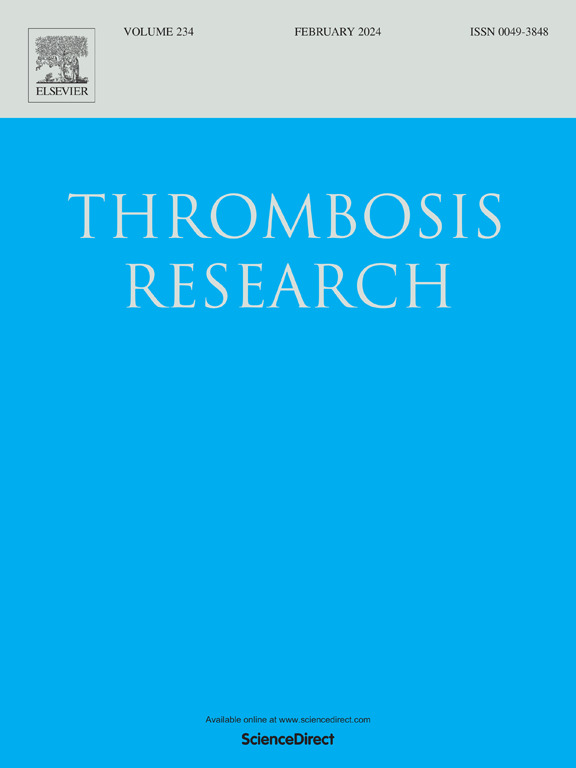A real-world pharmacovigilance analysis of the FDA adverse event reporting system database for emicizumab
IF 3.4
3区 医学
Q1 HEMATOLOGY
引用次数: 0
Abstract
Background and objectives
Emicizumab has fundamentally changed the clinical management of hemophilia A. Despite its benefits, concerns about adverse events (AEs) have risen. This retrospective study used disproportionality analysis of FAERS data from 2017 to 2023 to examine AEs associated with emicizumab, either alone or in combination with activated prothrombin complex concentrate (aPCC) or recombinant activated factor VII (rFVIIa), as well as the timing of these AEs.
Methods
Established algorithms (ROR, PRR, BCPNN, and MGPS) were used to assess correlations and calibrated p-values.
Results
Based on 1198 AEs, we identified 126 cases that met four algorithmic criteria. AEs associated with emicizumab included primarily joint pain and injection site reactions (ISRs), consistent with the drug label. Additionally, we observed thrombotic events related to emicizumab's black box warning. Specifically, we found that emicizumab poses increased risks of thrombosis when used in conjunction with aPCC or rFVIIa to treat breakthrough bleeds. After excluding reports related to the progression of hemophilia, we obtained 850 AEs with reported onset times. The median onset time for AEs was 106 days, with 46.59 % occurring within the first 90 days of emicizumab treatment.
Conclusion
Our study demonstrates the importance of early monitoring and interventions to minimize AEs and alleviate patient suffering.

对emicizumab的FDA不良事件报告系统数据库进行现实世界药物警戒分析
背景和目的emicizumab已经从根本上改变了a型血友病的临床管理,尽管它有益处,但对不良事件(ae)的担忧也有所增加。这项回顾性研究使用2017年至2023年FAERS数据的歧化分析来检查与emicizumab相关的ae,无论是单独使用还是与活化凝血酶原复合物浓缩物(aPCC)或重组活化因子VII (rFVIIa)联合使用,以及这些ae的时间。方法采用已建立的算法(ROR、PRR、BCPNN和MGPS)评估相关性和校准p值。结果基于1198例ae,我们确定了126例符合4个算法标准的病例。与emicizumab相关的不良反应主要包括关节疼痛和注射部位反应(ISRs),与药物标签一致。此外,我们观察到与emicizumab黑框警告相关的血栓形成事件。具体来说,我们发现emicizumab与aPCC或rFVIIa联合用于治疗突破性出血时,血栓形成的风险增加。在排除与血友病进展相关的报告后,我们获得了850例具有报告发病时间的ae。ae的中位发病时间为106天,46.59%发生在emicizumab治疗的前90天内。结论早期监测和干预对减少不良反应和减轻患者痛苦具有重要意义。
本文章由计算机程序翻译,如有差异,请以英文原文为准。
求助全文
约1分钟内获得全文
求助全文
来源期刊

Thrombosis research
医学-外周血管病
CiteScore
14.60
自引率
4.00%
发文量
364
审稿时长
31 days
期刊介绍:
Thrombosis Research is an international journal dedicated to the swift dissemination of new information on thrombosis, hemostasis, and vascular biology, aimed at advancing both science and clinical care. The journal publishes peer-reviewed original research, reviews, editorials, opinions, and critiques, covering both basic and clinical studies. Priority is given to research that promises novel approaches in the diagnosis, therapy, prognosis, and prevention of thrombotic and hemorrhagic diseases.
 求助内容:
求助内容: 应助结果提醒方式:
应助结果提醒方式:


